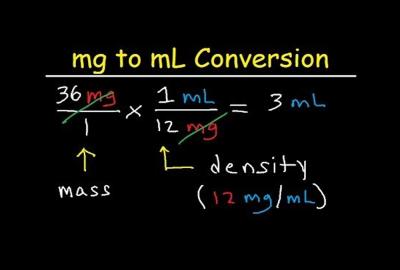Categories
Tags
Archives
The Role of mg to ml Conversion in Drug Administration
-
Posted by Total calculators Filed in Health #mg to ml #mg to ml converter #mg to ml calculator 512 views
In drug administration, particularly in healthcare settings, the conversion between milligrams (mg) and milliliters (ml) plays a critical role. This process is essential because medications are often prescribed in terms of weight (mg), but administered as a liquid volume (ml). Ensuring the accurate dosage of medications, especially in intravenous or oral liquid form, relies heavily on precise mg to ml conversions.
Importance in Patient Safety
One of the primary reasons these conversions are so crucial is to ensure patient safety. An incorrect conversion can lead to over-dosing or under-dosing, both of which can have severe consequences. For example, with potent medications such as insulin or chemotherapy drugs, even a small error can be dangerous. Therefore, healthcare professionals must be highly skilled in performing these conversions, and tools such as conversion calculators are often employed to eliminate the risk of human error.Formula for Conversion
The conversion between mg and ml depends on the concentration of the drug, which is usually indicated on the medication packaging or in the prescribing information. The basic formula is:Volume (ml)=Concentration (mg/ml)Dose (mg)
For instance, if a medication has a concentration of 5 mg/ml, and the required dose is 10 mg, the volume to be administered would be:
Volume (ml)=5mg/ml10mg=2ml
Converting milligrams (mg) to milliliters (ml) is crucial in drug administration for several reasons:
- Dosage Accuracy:
Ensures patients receive the correct amount of medication based on their needs. Accurate conversions prevent underdosing or overdosing, which can have serious health implications.
2. Medication Formulations:
Different medications come in various forms (e.g., liquids, tablets). Understanding the concentration (e.g., mg/ml) helps healthcare providers determine how much liquid to administer for a specific dose.3. Patient Safety:
Accurate conversions minimize the risk of errors in medication administration, which can lead to adverse effects or ineffective treatment.4. Intravenous (IV) Medications:
Many IV medications require precise conversion from mg to ml to ensure the correct infusion rate and volume, affecting the drug’s efficacy and the patient’s safety.5. Pediatric and Geriatric Considerations:
Children and elderly patients often require specific dosages based on weight or surface area. Converting mg to ml allows for tailored dosing that considers individual patient needs.6. Regulatory Compliance:
Healthcare professionals must adhere to strict regulations regarding medication dosages. Accurate conversions help maintain compliance with medical guidelines and protocols.Conclusion
mg to ml calculator play a vital role in ensuring safe and effective drug administration. By facilitating accurate dosing, these conversions are essential for patient safety, adherence to medical standards, and effective treatment outcomes. - Dosage Accuracy:
